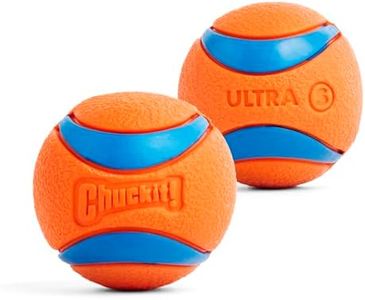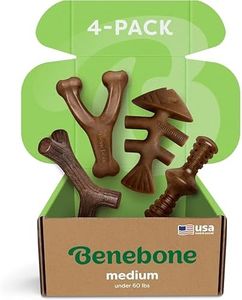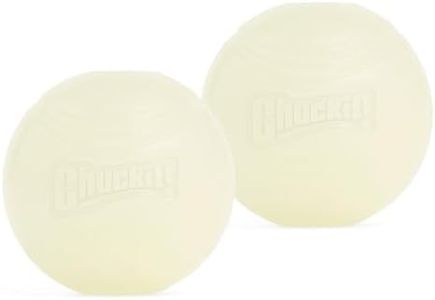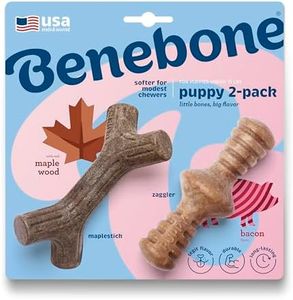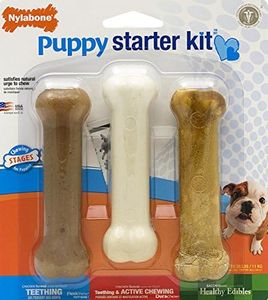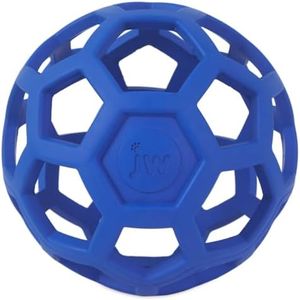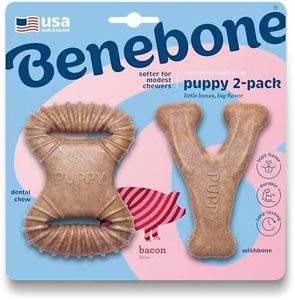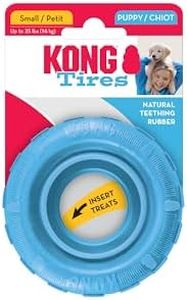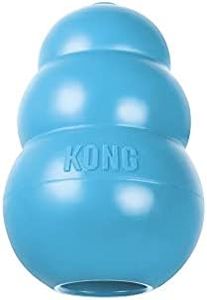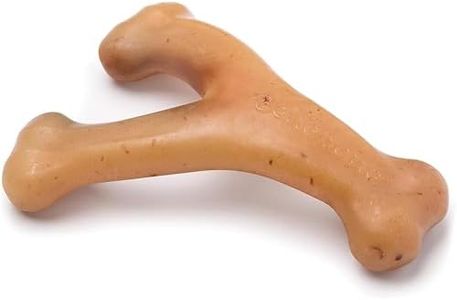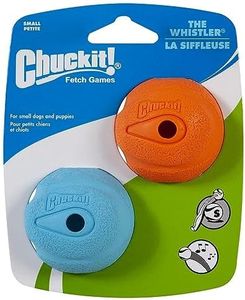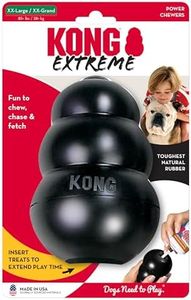We Use CookiesWe use cookies to enhance the security, performance,
functionality and for analytical and promotional activities. By continuing to browse this site you
are agreeing to our privacy policy
10 Best Dog Toys For Puppies
From leading brands and best sellers available on the web.Buying Guide for the Best Dog Toys For Puppies
Choosing dog toys for puppies is an exciting part of raising a young dog. Toys play a crucial role in your puppy’s development, helping with teething, mental stimulation, and preventing destructive behaviors. As you look for the best toy, keep in mind your puppy’s age, size, chewing habits, and level of activity. The right toy will be engaging, safe, and durable enough to withstand puppy play without causing harm.Material SafetyMaterial safety refers to the substance the toy is made from and its suitability for puppies. This spec is important because puppies frequently chew, and unsafe materials can break into choking hazards or contain toxic chemicals. Toys made from non-toxic, BPA-free rubber, soft latex, or durable fabric are commonly considered safe. Hard plastics or anything that splinters easily should be avoided. For softer chewers, plush toys are acceptable, while tougher rubbers are better for strong chewers. Always ensure the material is appropriate for your puppy’s teething phase and won’t easily break apart.
Toy SizeToy size is about how well a toy fits in your puppy’s mouth and whether it is appropriate for their stage of growth. It’s important because toys that are too small may be swallowed or choke a puppy, while overly large toys may not be engaging or easy to handle. Small breeds typically do well with tiny, lightweight toys, whereas larger breeds need medium to large toys for safe play. Always choose a size that your puppy can comfortably carry without the risk of choking or injuring their mouth, and remember to upgrade as they grow.
DurabilityDurability describes how well a toy holds up against chewing and rough play. This is critical because puppies are notorious for tearing toys apart, especially during teething. Some toys are labeled as ‘indestructible’ or ‘heavy-duty’, best suited for puppies that chew aggressively. For mild chewers, less durable but softer toys may suffice and soothe sore gums. Observe your puppy’s chewing style and select a toy that matches their strength; always check for signs of wear and replace toys that look damaged.
Teething SupportTeething support highlights a toy’s ability to soothe sore puppy gums. Many puppy toys are designed with textures, ridges, or cooling features that help relieve discomfort during teething. This is a vital spec for puppies under six months. Textured rubber or freezable toys are excellent for this stage as they provide relief and prevent puppies from chewing furniture. Assess the age and teething status of your puppy to pick toys specifically designed to help with this common puppy challenge.
Stimulation and EngagementStimulation and engagement refer to how much a toy can capture your puppy’s interest and keep them mentally and physically active. Features such as squeakers, crinkle sounds, unpredictable bounces, or interactive puzzles make toys more exciting and help prevent boredom. If your puppy is easily bored or left alone for periods, choose toys with more stimulating features to keep them entertained; less active puppies may prefer simple chew toys or cuddle plushies.
Ease of CleaningEase of cleaning is about how simple it is to keep the toy hygienic. Puppies are messy and toys quickly get dirty, so the ability to easily wash and sanitize them is important for your puppy’s health. Toys that are dishwasher-safe, machine washable, or easily wiped down are best. If your puppy has allergies or a sensitive tummy, opt for toys that can be thoroughly and frequently cleaned with minimal effort.
